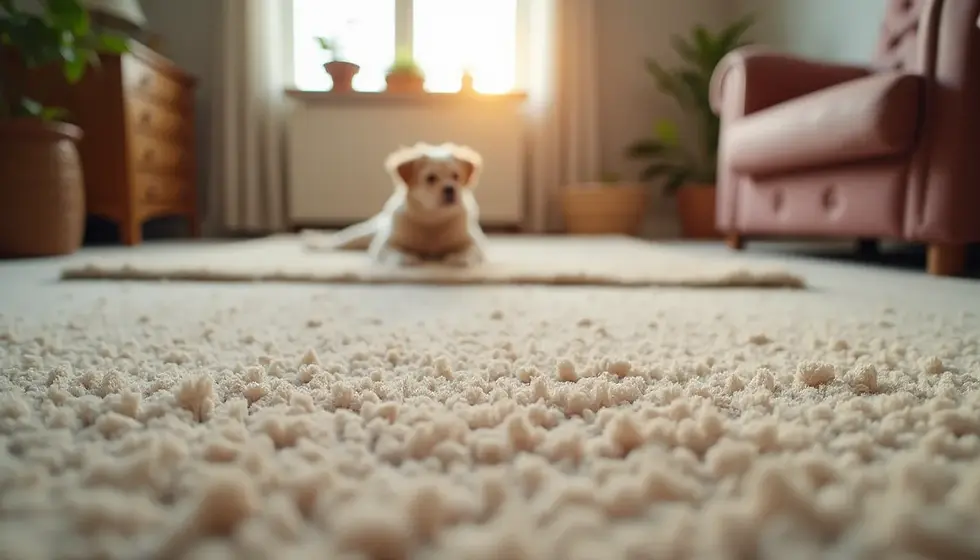Nylon or polyester carpet? The no-nonsense guide for busy homes 🏠
- Mei-Lin Arora

- Sep 6
- 3 min read
Updated: Sep 7
Choosing nylon or polyester carpet can feel like a toss-up. Both are affordable and come in any style, but they behave differently with pets, spills, and heavy traffic. Below is the straight, field-tested breakdown so you can decide fast—and care for the floor you pick.
Rule of thumb: nylon = tougher, bounces back; polyester = softer hand, great colors, budget friendly.

Nylon or polyester carpet: quick verdict
If your home sees heavy foot traffic, kids, or stairs, choose nylon. It has the best resilience (crush recovery) and keeps its shape under daily pounding. For softer feel and stain resistance at lower cost, polyester is compelling—especially in bedrooms or media rooms. Many homeowners love polyester for a polyester couch with dogs because fur releases easily and modern PET fibers clean up well; the same logic applies to carpeted rooms with pets. 🐶
Authoritative background on how fiber chemistry drives performance is covered by the Carpet and Rug Institute.

Durability, stains, and comfort (what really matters)
Resilience & wear: Nylon springs back after furniture and footsteps, which is why commercial spaces prefer it. Polyester can mat in hallways if you pick very low-density piles.
Stains: Solution-dyed polyester is naturally hydrophobic, so many food dyes and spills release more easily. Nylon needs stain protection but handles abrasion better in the long run.
Feel & appearance: Polyester often feels slightly plusher at the same price point. Both come in patterned loops, textures, and friezes—pick density and twist for the best look across years.

Cleaning and maintenance (keep it simple) 🧼
Vacuuming: Twice weekly in traffic lanes; use the right height setting to avoid fuzzing.
Spot care: For cleaning nylon carpet, blot—don’t rub—then use a CRI-approved solution. For polyester, an oxygen-based spotter usually works well. See the IICRC spot-cleaning basics.
Professional cleaning: Hot-water extraction every 12–18 months keeps both fibers fresh and supports warranty compliance.
EPA’s long-standing guidance on indoor air and flooring can help you plan ventilation during and after cleaning.

Cost, warranties, and local showrooms
Nylon generally costs more but lasts longer in tough zones; polyester delivers value for low-to-moderate traffic rooms. Compare written warranties—abrasion, texture retention, and stain coverage vary by brand.
If you’re visiting showrooms, you’ll often see location-based pages like nylon carpet flooring Warriewood or nylon carpet flooring Brookvale. Use them to check stock and samples, but always confirm face weight, density, and twist—the metrics that actually decide feel and lifespan.
Can you layer tiles or switch materials?
Thinking about carpet tiles on top of carpet during a phased remodel? It’s rarely recommended. Tiles need a firm, flat substrate to lock together; laying them over plush carpet causes movement and trip hazards. Remove the old carpet or install an approved underlayment panel first for a clean result.

FAQ
Which is better: nylon or polyester carpet?
For high-traffic areas and stairs, nylon wins on resilience; for soft feel and value in lower-traffic rooms, polyester is a smart pick.
Is polyester good with pets?
Yes—polyester sheds hair easily and resists many stains, echoing why a polyester couch with dogs is popular; choose tight, cut-pile styles to minimize snags.
What’s the best approach to cleaning nylon carpet?
Vacuum often, spot-treat with CRI-approved products, and schedule hot-water extraction every 12–18 months to maintain texture and warranties.
Can I install carpet tiles on top of carpet?
Not advised; remove the old carpet or use a rigid underlayment so tiles stay flat and safe.
How do I compare options in Warriewood or Brookvale?
Search local inventory pages—nylon carpet flooring Warriewood and nylon carpet flooring Brookvale—then bring home density/twist specs and swatches for side-by-side testing. 🙂



Comments